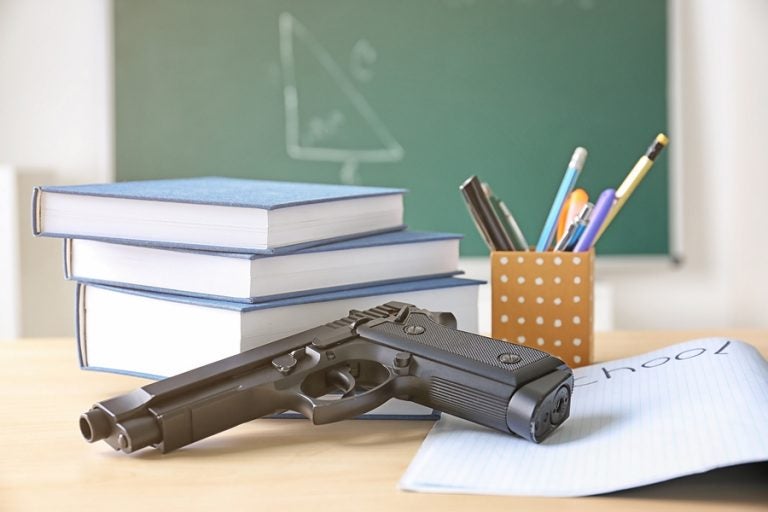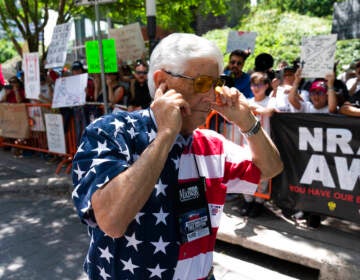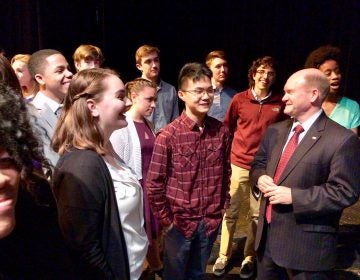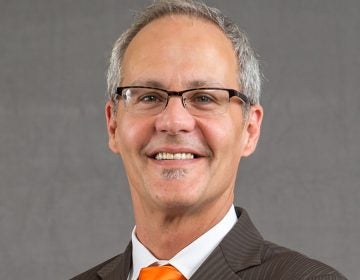I would quit teaching before I would carry a gun at school
A student asked if I would carry a gun to school if instructed to do so. “No,” I said, without pause.

(Yastremska/Big Stock Photo)
One day last week, while my students worked on assignments, I found myself scanning the classroom, just as many other teachers probably were. But now it wasn’t just to make sure that students were on task or to look for someone who might be struggling. I wasn’t thinking through procedures for my next lab or lesson. I was planning escape routes and hiding places.
I was trying to answer so many questions. If I heard gunshots, saw emergency lights, or heard an announcement, what should I do? How would I protect and shelter the 33 children in my charge? Are my cabinets possibly big enough for a teenager to hide in? Should I try to usher them all into the tiny science office attached to my room, or would the tables in the classroom adequately hide them from the sight lines of my two doors — both of which lead to main entry points for the school? If a door is open, should I try to close it, or would that put everyone in more danger because they open out into the hallway? Or would turning off all of the lights be enough? And most importantly, how do I quickly, quietly, and forcefully convey a plan of action to 33 terrified teenagers?
I know the danger of drilling plans into their heads. I remember stories of Columbine students going towards danger or simply sitting and waiting for it instead of running away from it because that is what they had practiced for fire or lockdown drills. How do I convince my students to focus on their own safety and trust that other teachers will take care of their brothers and sisters in the adjacent elementary school? And worse, how do I convince the young mothers among my students to trust the day care to protect their own children?
I did all this planning silently, because I was honestly scared to talk to my students. I was unable to read the news that week without openly crying on the subway, and I didn’t think I would be able to talk about it without getting emotional and scaring them even more. But I knew that I had to. I had to let them know it was okay to be scared and that they had people in their lives who care about them.
So last week Thursday I gathered my nerves and started by going over basic procedures: the importance of being silent in order to hear instructions during both drills and actual emergencies; reviewing where our emergency neighborhood meeting places were in case they had to leave the building; telling them that we needed them to listen to their teachers if we gave them instructions and also to make good choices if we couldn’t. I said aloud, “If you are in the hallway or the bathroom and not with a teacher …” but I was thinking, “If your teacher [me] had been hurt or killed ….”
I also told them that they had to be our school’s first line of defense. They had to pay attention to their classmates. If something seemed wrong, if someone seemed like they were hurting, they needed to tell someone. Anyone. And trust us. But I also wanted to have a discussion. I needed to hear their thoughts, their concerns, their fears — so I asked if anyone had questions.
A student immediately asked if I would carry a gun to school if instructed to do so.
“No,” I said, without pause.
I thought they would push back, that they would think I didn’t take their safety seriously if I wasn’t willing to arm myself to protect them. Instead, she asked what I would do if I was forced to carry.
I had already thought about that and discussed it with my husband and was able to answer: “I would quit.”
My eyes welled up because I truly love my job. I love my students, and I can’t imagine doing anything else.
When the student thanked me, I started to actually cry. She said that she wouldn’t feel safe knowing there were guns in the school. A second student added that he thought it would make it easier for a student who was really upset to find a gun right away and do something terrible if he didn’t have to get it past security or have time to cool down.
Another student asked how “they” could afford to give us guns but not school supplies. Another asked if “they” really thought that teachers could accurately shoot a shooter and still protect a classroom.
Then the first student said it would immediately change her relationship with her teachers. She said that she trusted us and felt safe with us, and she needed that feeling of safety because she didn’t feel it in most parts of her life. But if we were armed, and if we would be willing and able to shoot and possibly kill a student, or a former student, or even a stranger, she couldn’t feel safe around us. She also expressed concern about the possibility of a teacher accidentally hurting someone, or themself. And then she thanked me again and asked me not to allow guns into the school.
Through my tears, I saw some of her classmates nodding, and I was very relieved when the bell rang, dismissing them.
These are students who have grown up around guns and violence. And they do not want or need their teachers to be soldiers. They need us to be their supporters and cheerleaders, and sometimes their counselors and their confidants. They need us to be their teachers.
—
Sara Gallagher is a teacher in Philadelphia.
WHYY is your source for fact-based, in-depth journalism and information. As a nonprofit organization, we rely on financial support from readers like you. Please give today.




